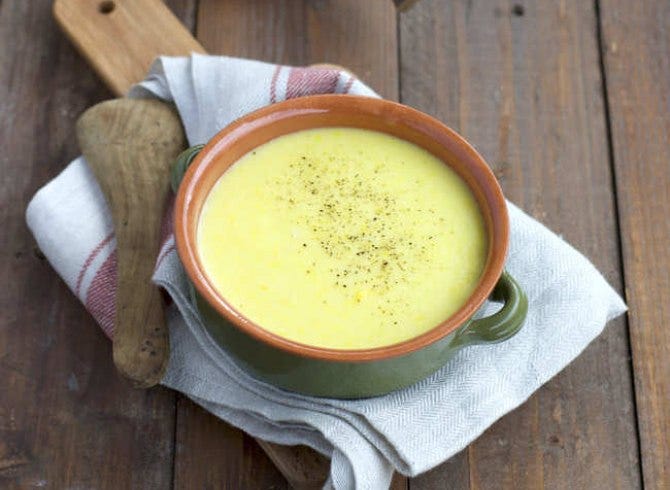{Fresh Agnolotti, image attribution via Great Italian Chefs}
Buongiorno amici:
In the region of Piedmont, there is a stuffed pasta that looks like a priest’s hat, made by filling round thin pasta disks, then folded into a half-moon shape. The name is “agnolotto.”
The difference between the priest hat and cousin raviolo is in the filling. Agnolotti (plural) enjoys meat fillings, whereas, in ravioli, you can use all kinds of vegetables and leftovers from the day before, perhaps the best time to use your food processor productively.
If you are making a meat-based filling, use nutmeg to add to the normal spicing. The spice adds an exotic layer of taste, especially with chicken, capon, or duck. In Turin, the region’s capital, everyone has a version of the filled pasta, and families treasure their filling recipes and rarely share them.
Some mixtures will have braised pork, roast beef, and veal stew, as the most recognized, but other non-very hip products appear, such as calves, brains, and organs.
You can gently poach agnolotti in water, but it will be decisively better if you have broth of any kind at hand. Keep in mind when making a stuffed pasta, you want to see the shadow of the fillings, therefore practically transparent—moreover, the more decadent the filling, the simpler the sauce.
For the complementing condiment, I am suggesting a cheese fondue (Fonduta). In Piedmont, the famous rich-dipping sauce pairs well with any snack or appetizer for seasonal raw vegetable dipping.
Whatever your choice, concentrate on the pasta-making and the richness of the filling. As far as sauces, the options are several. Still, simplicity ought to prevail, and a measured drizzle of excellent extra virgin, shavings of Parmigiano, and slices of truffles may convert your creation into a gastronomic ecstasy.
Below a recipe to enjoy.
Basic Pasta Recipe
Four large eggs
3 cups all-purpose flour
One tablespoon olive oil
Procedure
Measure the flour and place it on a clean countertop of wood or granite, never stainless. With a spoon, create the volcano in the center. Crack your eggs and scramble them with a fork until yolks and whites are incorporated. As you move the eggs from side to side, you will notice that flour falls on the egg mixture, thickening considerably. Once you have a solid mass, use your hands and knead vigorously for about 12 minutes, until smooth and elastic—cover dough with plastic wrap or a clean kitchen towel and rest for 30 minutes.
You can now work on the vegetable filling.
Ingredients:
One large zucchini cut in ¼ inch dice
One medium broccoli, florets only, coarsely chopped
One medium cauliflower, florets only, coarsely chopped
Two white mushrooms, cleaned, cut in quarters
1/4 cup grated Parmigiano Reggiano
Three scallions, sliced
Pinch grated nutmeg
Two teaspoons fresh parsley, chopped
Two tablespoons olive oil
Salt and freshly ground black pepper to taste
Several leaves of sweet marjoram for garnish
One egg with one tablespoon water for the egg wash
Directions:
Roast the Veggies: Preheat oven to 375 F.
Toss the vegetables in olive oil and roast in the oven for 20 minutes at 350 F. When soft, remove from the oven and puree the mix in the food processor until smooth. You can decide to have a total puree of some texture left on the mixture—season with salt, pepper, and Parmigiano as a binder. Divide the pasta into four equal balls, then thinly roll until you see the shade of your fingers against the light. Dust the dough sheets with plenty of flour and keep covered while working, avoiding getting dry. Cut dough in circles with a cookie cutter or by hand. Begin to fill the circles using two spoons or an ice cream scoop size 2 ounces, and fold in half. Leave sufficient space between the filling and the edge because you will need to brush with an egg wash for the sealing. As you fill the agnolotti, keep them covered at all times. Boil agnolotti in water or broth for about 8 minutes or until floating on the top of the liquid. Serve them with the fondue and Parmigiano Reggiano. Marjoram leaves for garnish.
Fonduta sauce
Serves 4-6
Ingredients
10 oz. Fontina cheese or fontal, rind trimmed, cut into small dice
1 cup of whole milk
Four tablespoons unsalted butter
One large egg yolks
Instructions
Combine milk and cheese into a small bowl (add more milk if necessary to cover cheese), cover, and set aside for 3 hours. In a double boiler, simmer the water. Rest a bowl on top with butter, cheese, and milk until melted and smooth. The container should not touch the water because all you need is indirect heat. Add egg yolk to cheese mixture, continually whisking with a small whisk, until sauce is smooth, thick, and glossy, about 10 minutes. Pour the fonduta over agnolotti and serve immediately.
{Fondue with Fontina via Facile con Gusto}
Thanks for reading. Eat safe! Ciao Chef W
Download Chef Walters E-Books
Please tune in to our latest Flavors + Knowledge Podcast
Subscribe to the Italian version SAPERE + SAPORI
Subscribe to News you can eat 24 Video-Cast on YouTube
Support Chef Walters Children’s Diabetes Foundation
For recipes, visit the chef blog.

Note: The views and opinions expressed in the Flavors and Knowledge newsletters are those of the authors and do not necessarily reflect Flavors and Knowledge’s official policy or position. Our blogger’s or authors’ content is of their opinion and not intended to malign any religion, ethnic group, club, organization, company, individual, or anyone. Any general advice posted on our blog, website, or app is only for informational purposes and not intended to replace any medical or other advice.

















